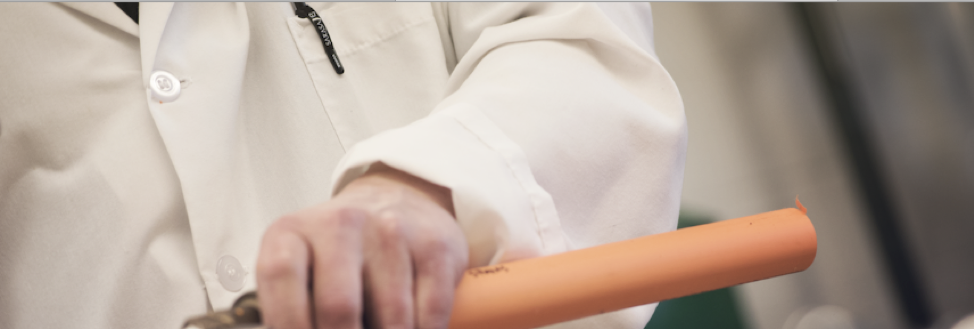BlazeMaster® CPVC Use with Drywall, Concrete and Spray Foam
BlazeMasterⓇ Fire Protection Systems devotes time and resources to knowledge-sharing and testing to ensure products can be used safely and effectively.
Chemical compatibility is often top of mind when working with CPVC. Spray foam, drywall and concrete are three common construction materials often in direct contact with BlazeMaster CPVC products, but with proper care, all three can be used without compatibility concerns.
Drywall Poses No Threat to BlazeMaster CPVC
Drywall requires no special installation considerations when being used with BlazeMaster CPVC. Drywall is soft, so there is little threat of damaging the pipe if installers take routine care. Spackling is also chemically compatible with BlazeMaster CPVC.
Installation Considerations with Concrete
Direct contact with concrete does not have any adverse chemical effects on BlazeMaster CPVC. There have been no reported cases of incompatibility with concrete or chemicals mixed with concrete over years of contact. In fact, BlazeMaster Fire Protection Systems has a UL listing to be embedded in concrete.
As a general rule, use caution to avoid damaging the pipe with tools and equipment used to pour and finish the concrete, and follow installation guidelines carefully.
BlazeMaster CPVC can also be installed in direct contact with precast or site-poured concrete walls or decks without any compatibility concerns. Check the installation instructions for advice on upsizing hangers to avoid stressing the pipe when installing against flat surfaces.
Concrete is abrasive, so when installing CPVC through penetrations in concrete walls or decks, avoid installing it in such a way that it may rub against the concrete as the system shifts or expands and contracts during its lifetime.
When Used Properly, Spray Foam Will Not Have Negative Effects on CPVC
Spray polyurethane foam (SPUF) insulation is often installed in direct contact with BlazeMaster fire sprinkler systems, and is growing in popularity. SPUF is typically applied with equipment that combines two liquid chemical components in a nozzle and sprays them into joist and stud spaces, where they react to form a solidified foam. The chemicals themselves are not compatible with BlazeMaster CPVC, but when the chemicals react and take on their proper foam state, the cured spray foam has little or no effect on CPVC.
When two-component foams are improperly mixed and there is an excess of either component present on the piping or when the material fails to foam, compatibility problems may arise from the unreacted excess or additives of either component being left in contact with the pipe or fittings.
Also, if the foam is applied too heavily, compatibility concerns may arise due to the resulting heat. The temperature inside the foam as it cures is above the boiling point of water, which softens the CPVC and could cause the pipe to balloon or burst if it is filled with water when the foam is installed. However, if the pipe is heated above its softening point without being filled or pressurized, it won’t balloon and will simply harden back up when the temperature falls.
To prevent excessive heat generation in the foam, insulation installers should apply the spray foam in thin layers no thicker than recommended by the foam manufacturer and be cautious of small building cavities where it is difficult to spray in layers.
In addition, it may be necessary for the piping installer to install expansion loops or offsets in order to support for thermal expansion of the pipe due to the heat generated by the SPUF as it cures, especially for long runs of pipe buried in SPUF. Consult the installation instructions for proper design and installation of thermal expansion compensation.
If spray foam becomes wet for any reason, remove any foam and also the pipe in the area that got wet. The water can wash incompatible additives out of the foam and deposit them onto the CPVC pipe, creating a potential for future leaks.
For more information on the compatibility study conducted by the Spray Polyurethane Foam Alliance (SPFA) or on the effects of the curing exotherm on CPVC, visit the SPFA website.
The FBCTM System Compatible Program is one example of an educational resource piloted by BlazeMaster Fire Protection Systems to avoid chemical compatibility issues and assist installers in choosing ancillary products for use in BlazeMaster fire protection systems.  to resolve additional compatibility concerns, or contact one of our experts.
to resolve additional compatibility concerns, or contact one of our experts.


